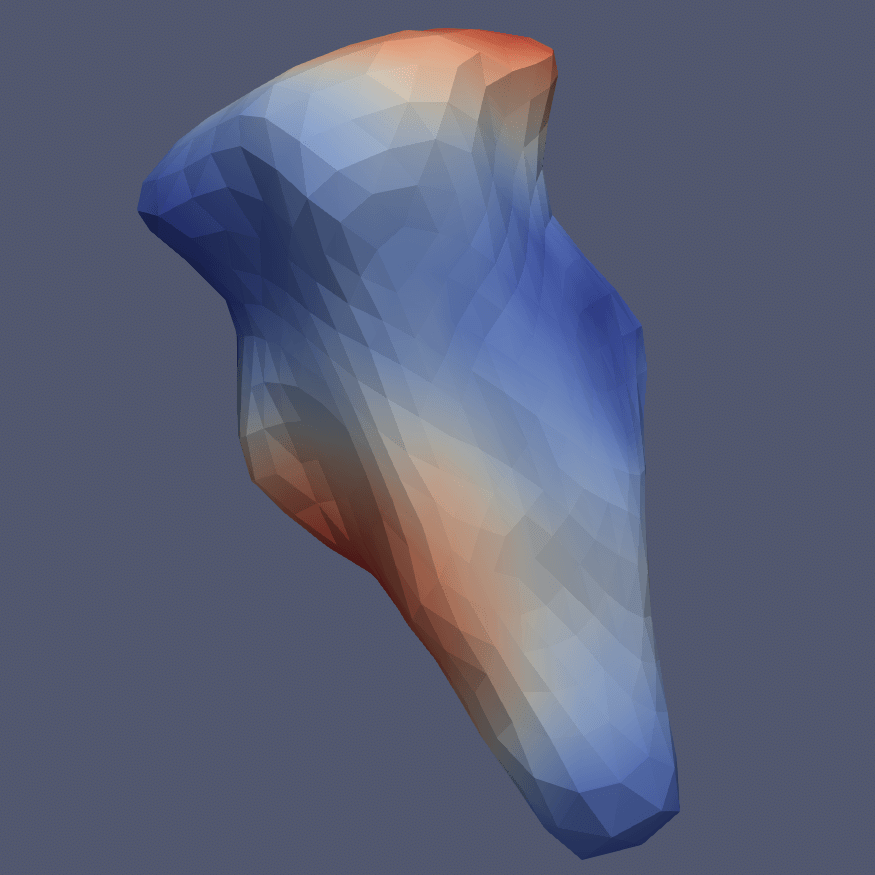
Mixed Effects Model of High-dimensional Irregular Shaped Tensors on Manifolds
Researchers: John Aston, Lexin Li (UC Berkeley), Jingjing Zou
This project focuses on modeling the effects of subject-specific covariates on outcomes on manifolds. The motivating application is to study features associated with activities on the cerebral cortex of the brain. Given subject-specific covariates and a group of time series of stimulus signals such as activity profiles, we aim to identify regions in the brain that react to the activities and the corresponding amplitudes of the reaction.
Several problems arise due to the complexity of the manifold data. First, the shape of each subject’s manifold varies, and an extra step of registration of the surfaces to a common template is needed so that different subjects are comparable. The registration introduces a geometric component to each subject’s outcomes. Second, functional responses on the manifolds often have high dimensionality. Third, the covariate tensor is of irregular shape as it is a combination of time-invariant and time-varying covariates. As a result, existing methods are inadequate and new regression methodologies need to be developed. Here we propose to address the problem with a two-step strategy. First, both the transformation of the manifolds and the responses on the manifolds are projected to lower-dimensional spaces as proposed in Lila and Aston (2017). Second, the lower-dimensional projections are modeled as varying according to a mixture of subject-specific fixed effects and a group of random variables to reflect the interaction between the geometric and functional components of the image. To estimate the parameters in the model, we extend the Restricted Maximum Likelihood (REML) to the case of irregular-shaped tensors.

